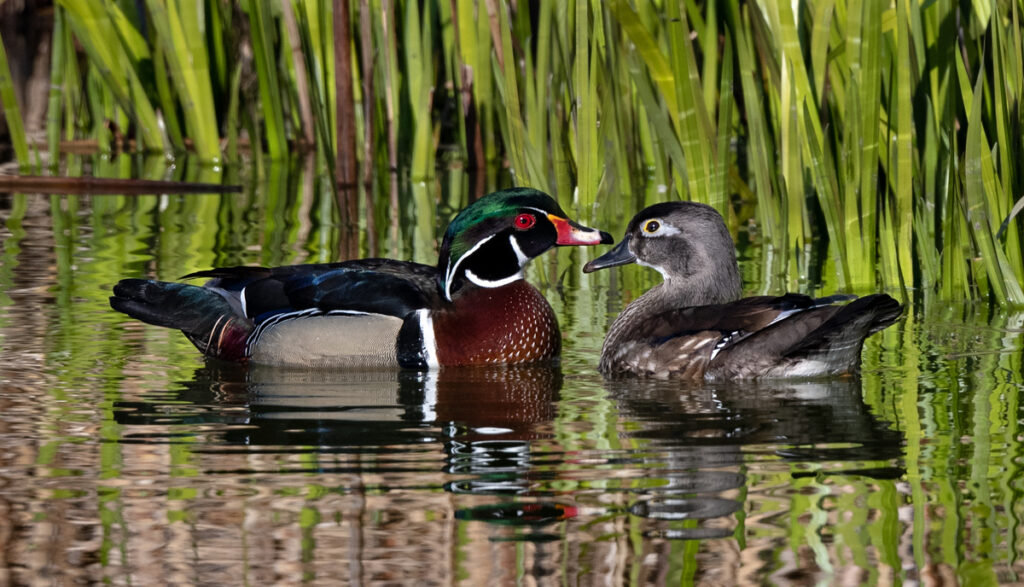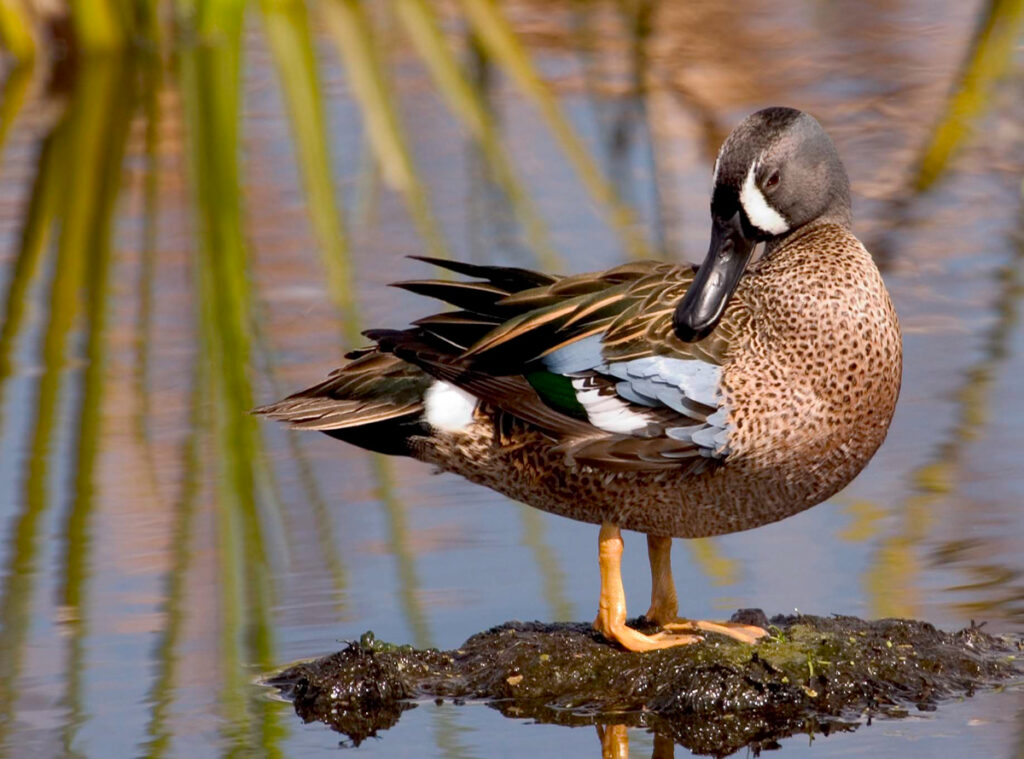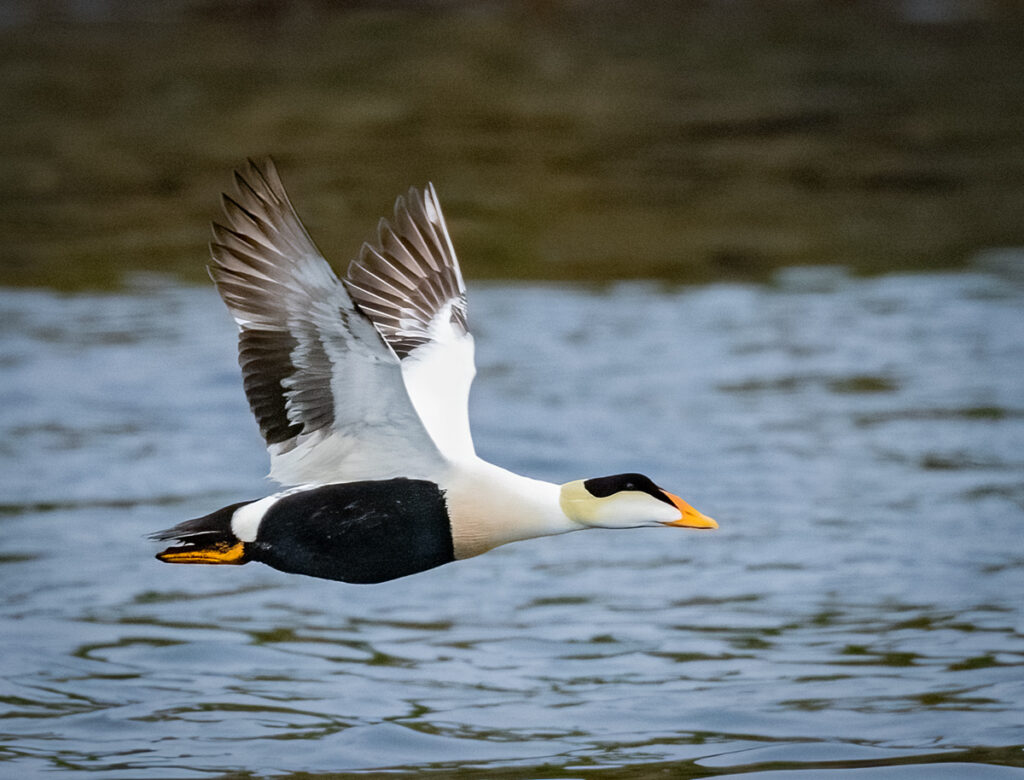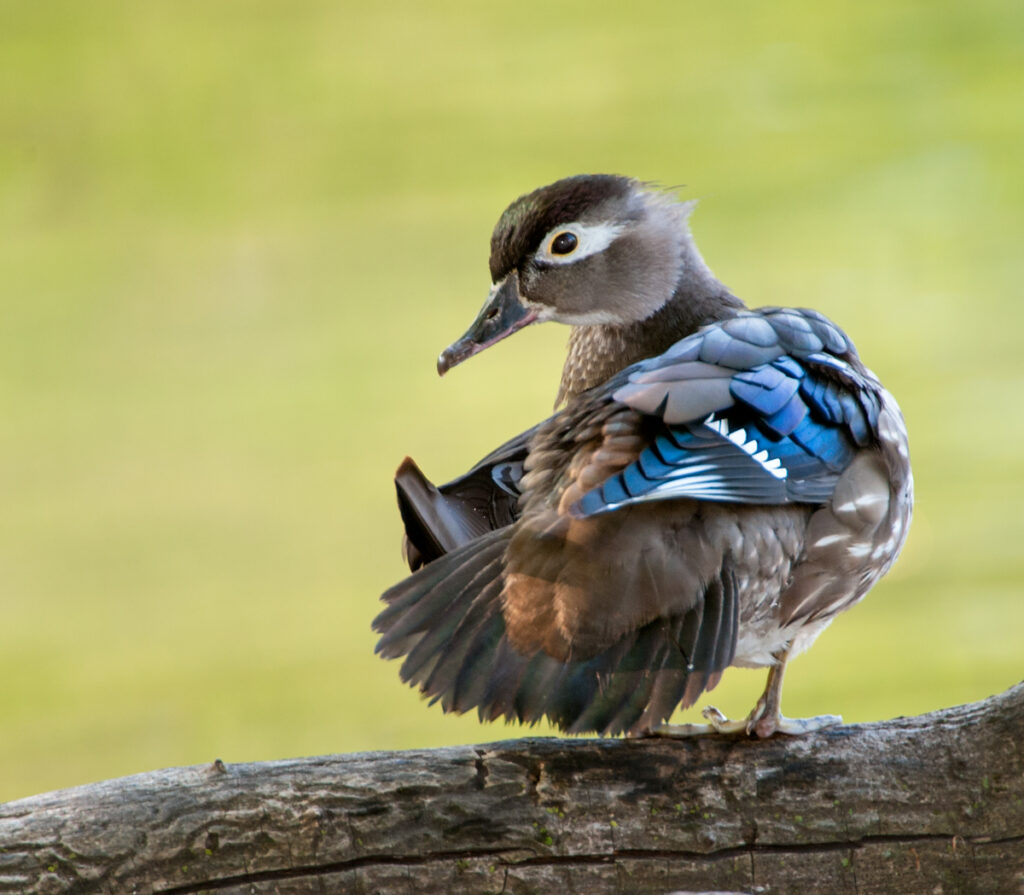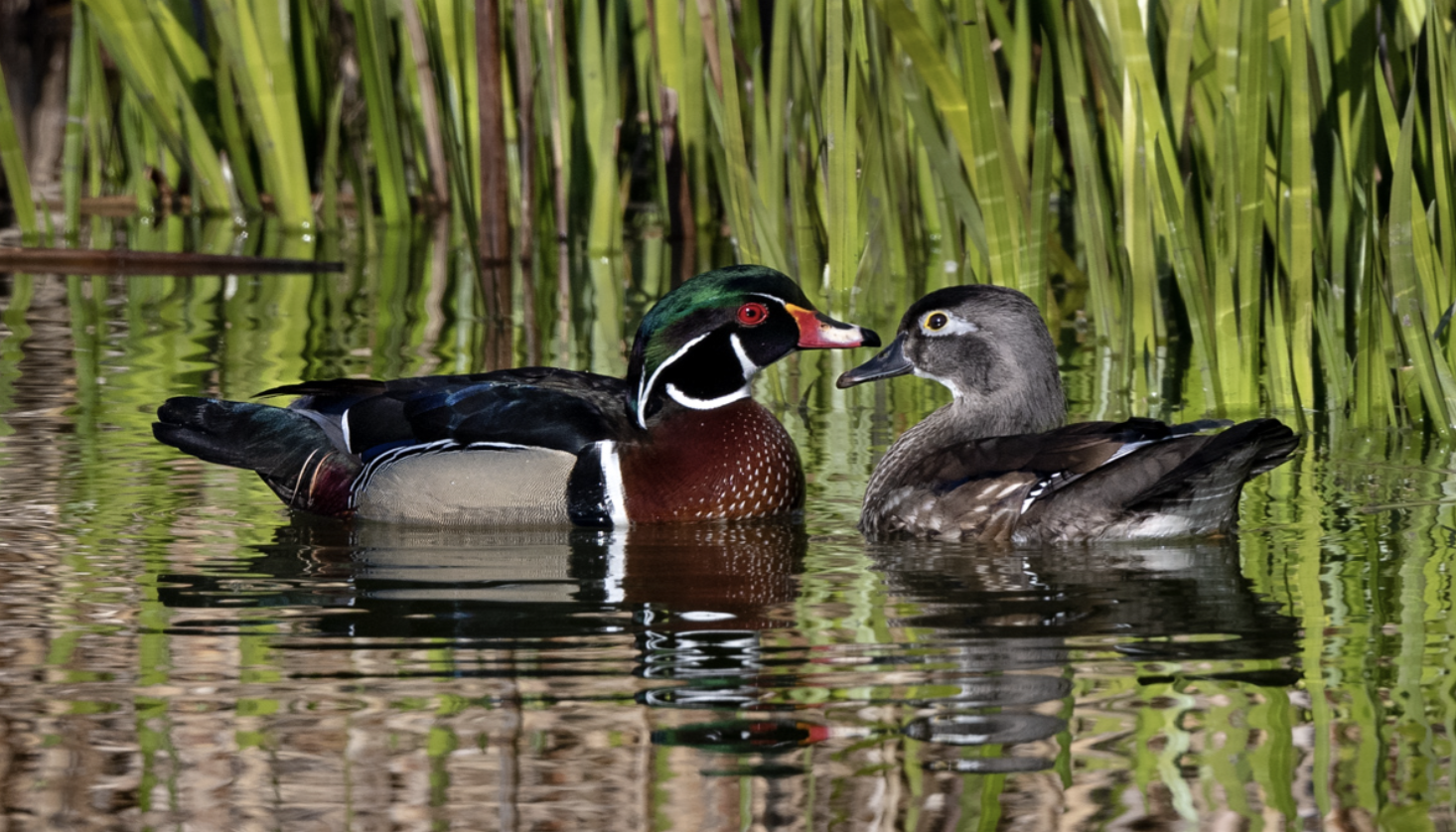
Ducks are ubiquitous, found in many habitats where water exists, from coasts and estuaries to wetlands, rivers, manmade lakes, and even simple backyard ponds. Commonly seen in urban and suburban areas as well as protected preserves, ducks are ideal subjects for bird photography. It is important to properly identify ducks, however, to better appreciate their unique traits and capture their diverse personalities.
All Ducks
There are approximately 135 species of ducks in the world, and all belong to the bird family Anatidae with their goose and swan cousins. All ducks are waterfowl and adept swimmers, but often seem clumsy or frantic in flight. These are typically social birds and even congregate in mixed flocks, and while males often have bold marking and colors, females tend to be more camouflaged but may show hints of color that can be subtly beautiful.
Even if you have difficulty identifying exact species of ducks, recognizing the general types of ducks can help you better photograph each one.
Types of Ducks
There is great diversity among ducks, but it can be helpful to group these birds into similar classifications as you work to identify them.
Dabbling Ducks
Some of the most familiar ducks are the dabblers, the easy-going ducks that “tip up” to feed by nibbling at mud and plants in shallow water, most often in slower-moving freshwater such as marshes, lakes, and ponds. These birds may also nibble along the surface of the water with their broad, spatula-shaped bills. Mallards, shovelers, and teals are all types of dabbling ducks.

Diving Ducks
These ducks are similar to dabblers in shape and size, but prefer to dive completely under the water’s surface to seek food deeper down. This allows diving ducks such as scaups, pochards, and goldeneyes to reach food in deeper water than dabbling ducks. These ducks have more powerful legs, and are agile underwater as they seek out plant materials to munch.
Mergansers
Mergansers are very specialized diving ducks easily recognized by their thin, hooked, serrated bills – the perfect focal point for duck photography. These birds are skilled hunters and seek out fish in deeper bodies of water, and their unique feather constructs, such as the bold crest of the male hooded merganser, make them spectacular photography subjects.
Eiders
These sea-ducks are coastal and oceanic birds, with spectacular colors, bold markings, and unusual shapes as part of their physiology, all of which make them great subjects for bird photography. While eiders can be more difficult to find, they are well worth the challenge because of how gorgeous and distinct they can be.
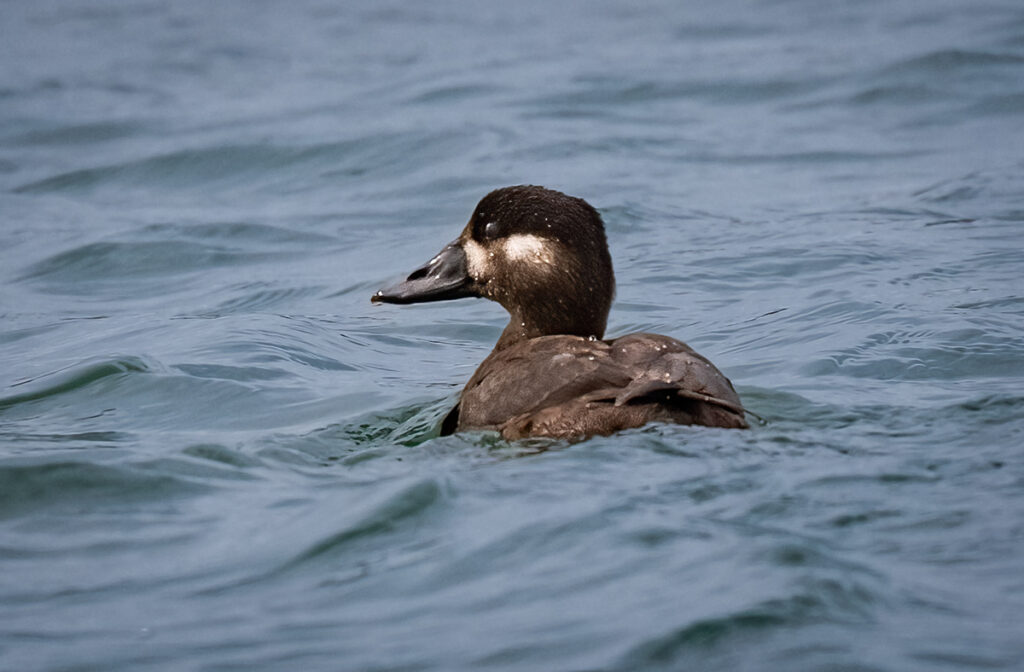
Scoters
Another type of sea-duck, scoters are bulky and stocky, with overall dark plumage. These characteristics may not be too photogenic, but many scoters have brilliantly colorful bills or unique patches of color that are eye-catching for birders and bird-photographers alike.
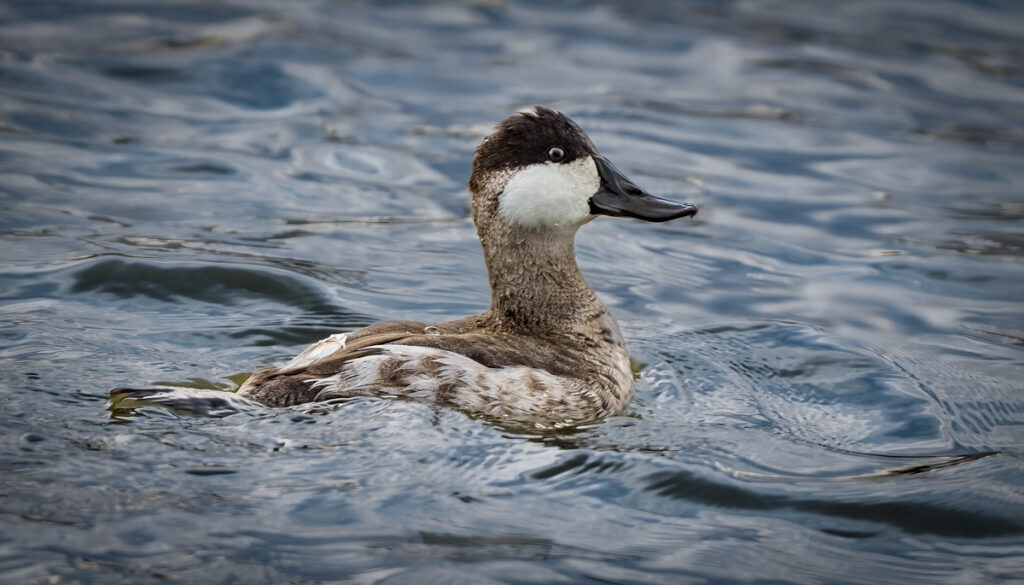
Stifftails
Smaller ducks with compact builds, stifftails use their rudder-like tails to steer as they swim. Capturing this behavior with these agile diving ducks is a great challenge for photographers, as it will involve minimizing water reflections so the tail can be clearly seen. Another classic pose that is easier to capture is a stifftail, such as the ruddy duck, floating with its tail held proudly erect.
Perching Ducks
While we’re used to seeing ducks on the water, ducks seen in trees can be eye-catching. These perching ducks feature longer, more prominent talons to grip branches for better stability. Many of these ducks, including the mandarin duck and the wood duck, have spectacular coloration that shows up well in the mottled light of tree branches, and these ducks are among the most beautiful in the world.
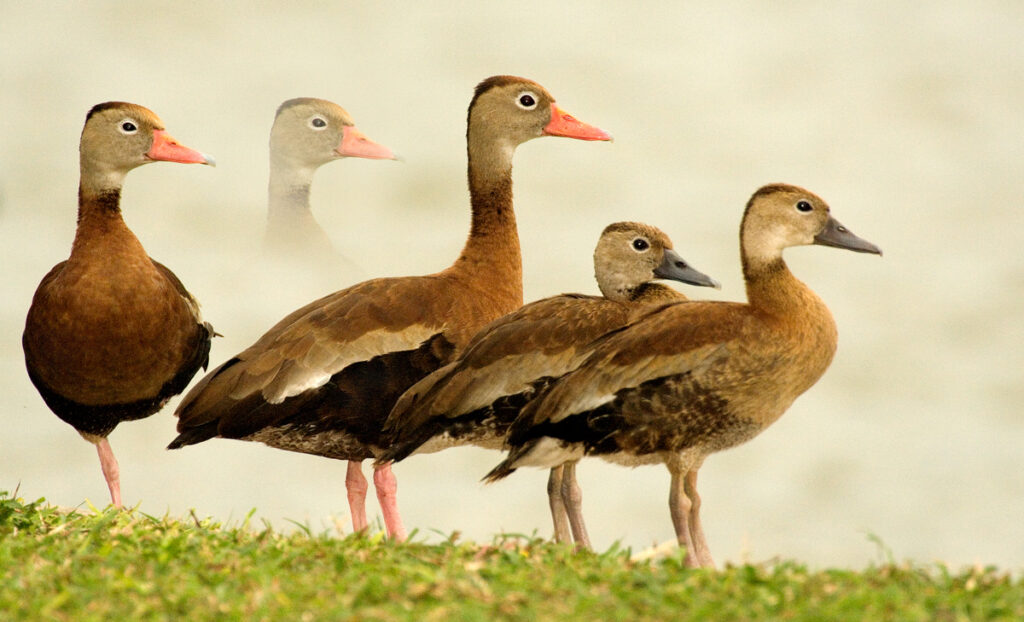
Whistling-Ducks
Whistling-ducks are tropical species, and their longer legs are great for radiating body heat to keep these ducks cool and comfortable. Their sweet, somewhat shrill calls are quite distinctive, as are their round heads that give whistling-ducks an innocent countenance. These birds call more frequently in flight, making them easy to identify on the fly.
In addition to these basic classifications of duck types, it’s important to recognize domestic ducks. Because ducks easily hybridize between species, domestic ducks – easily given as spring gifts but all too often discarded after the cute duckling stage – quickly crossbreed with wild ducks in urban and suburban parks and preserves. This leads to ducks with mottled markings, splotchy plumage, and wild “hairstyles” with feather tufts. While these aren’t purebred species, they can still be fun to photograph with their urban antics.
Recognizing the different types of ducks, including domestic hybrids, is the first step to more precise duck identification. The better you can classify and identify ducks, the better you will appreciate both the similarities and differences among ducks and what makes each one interesting.



